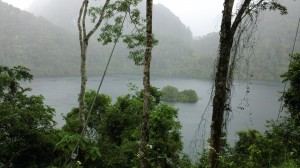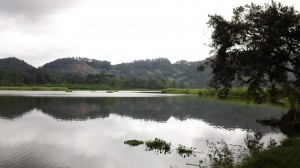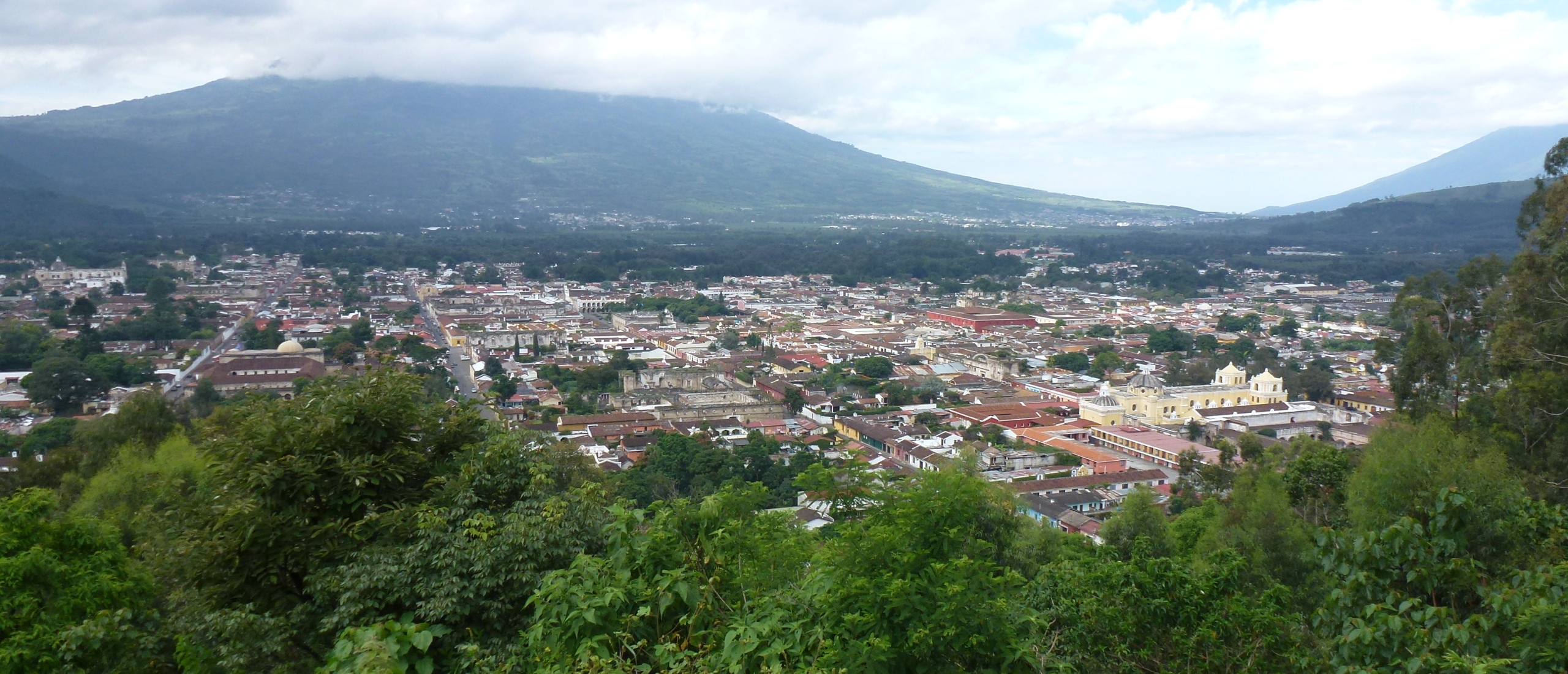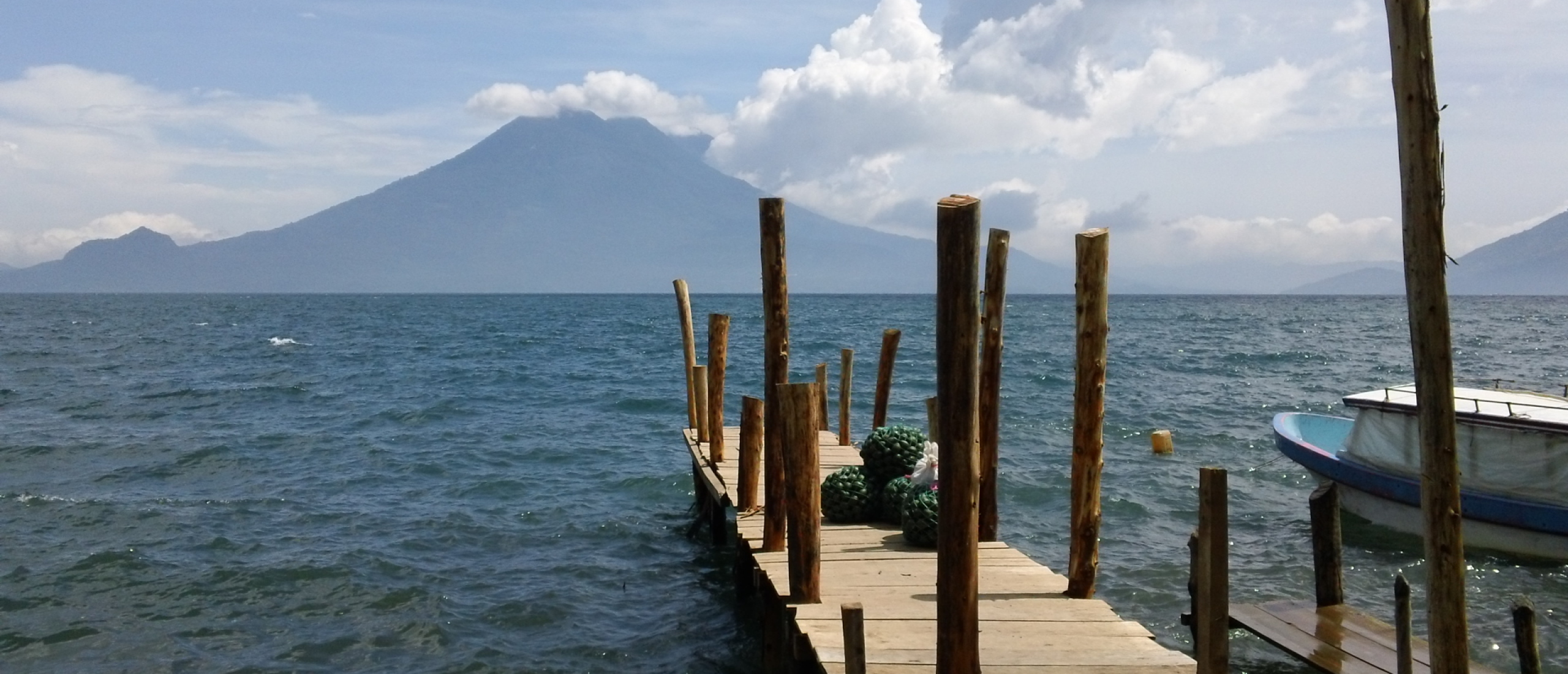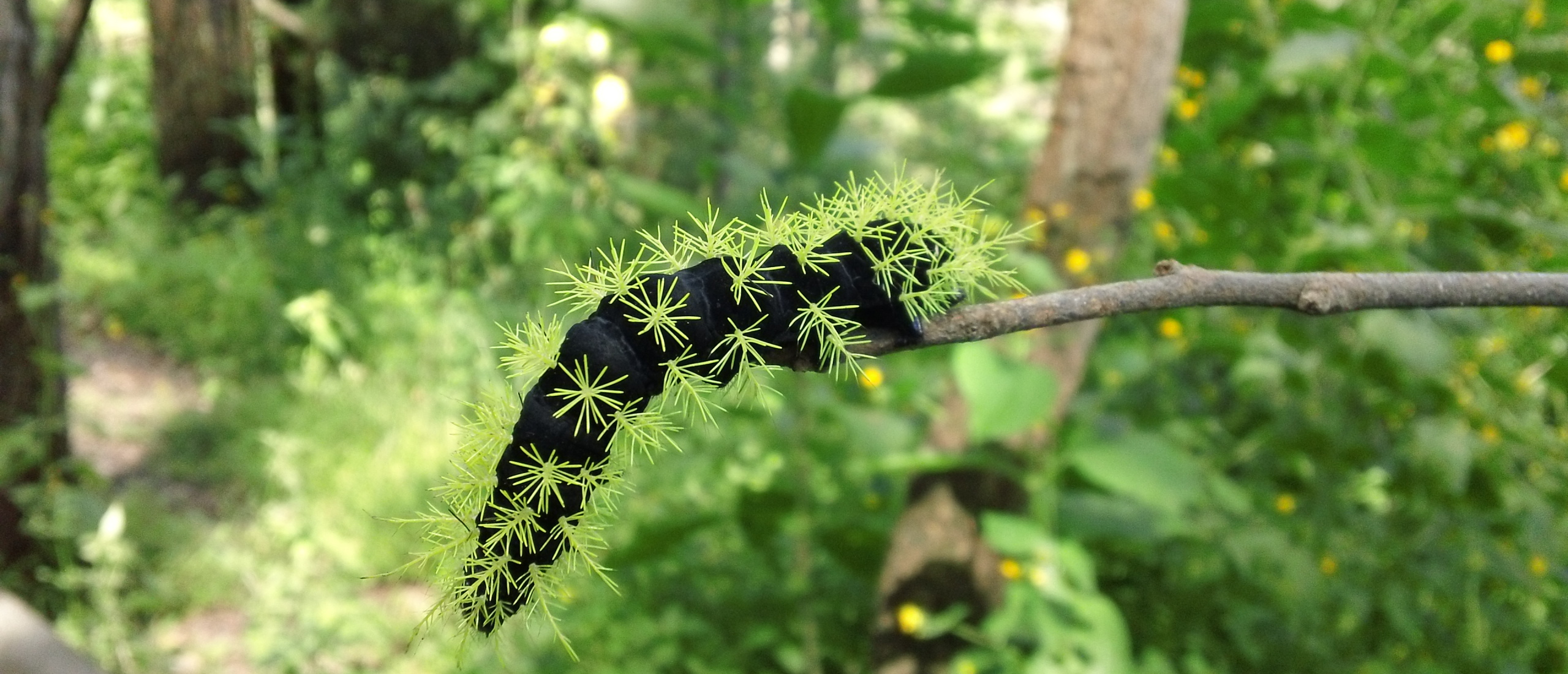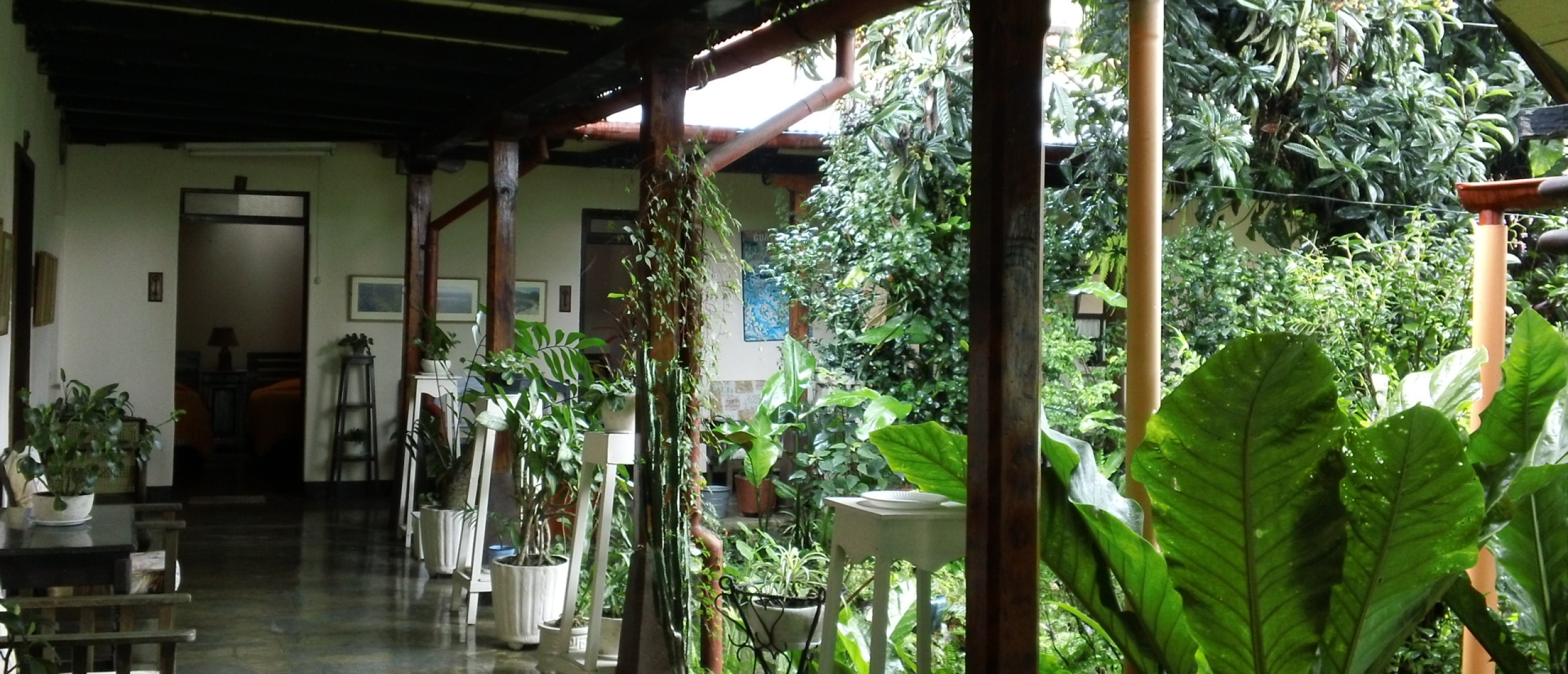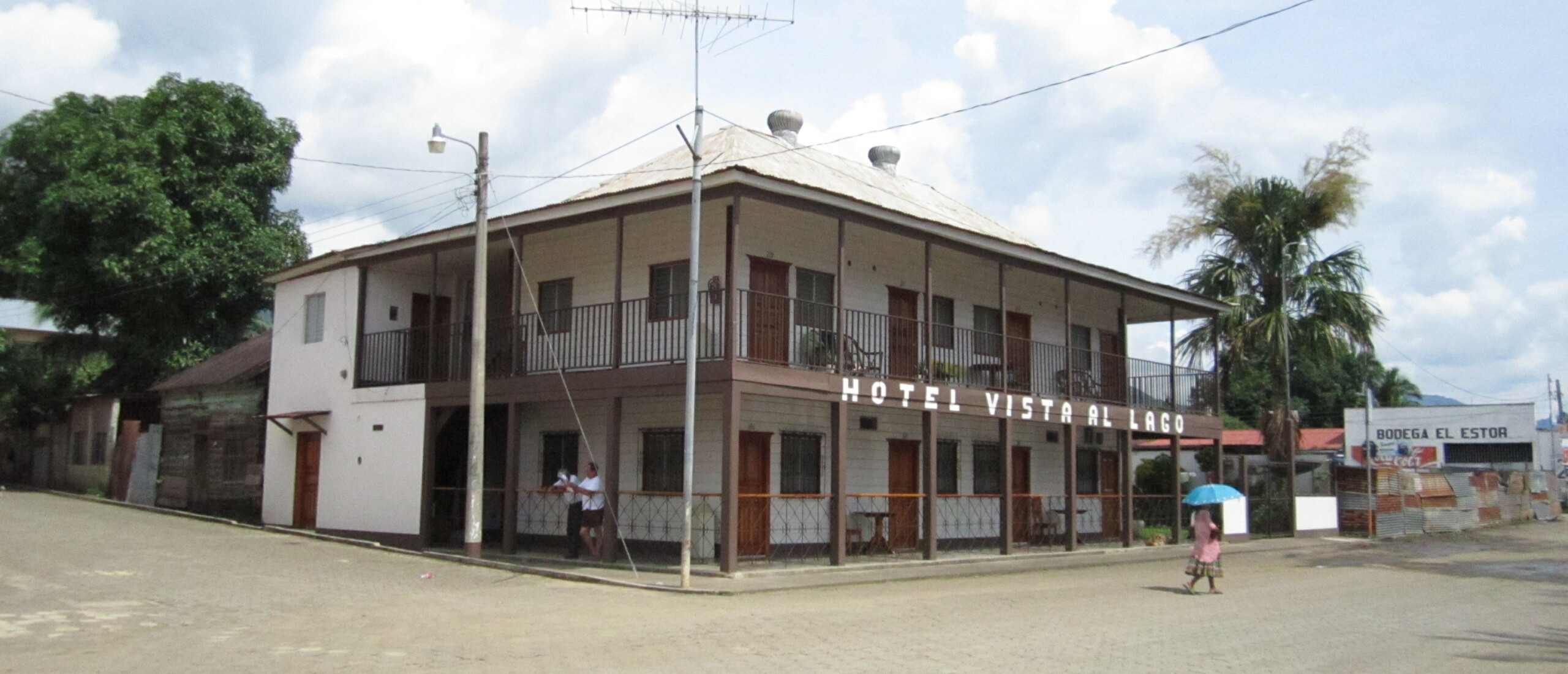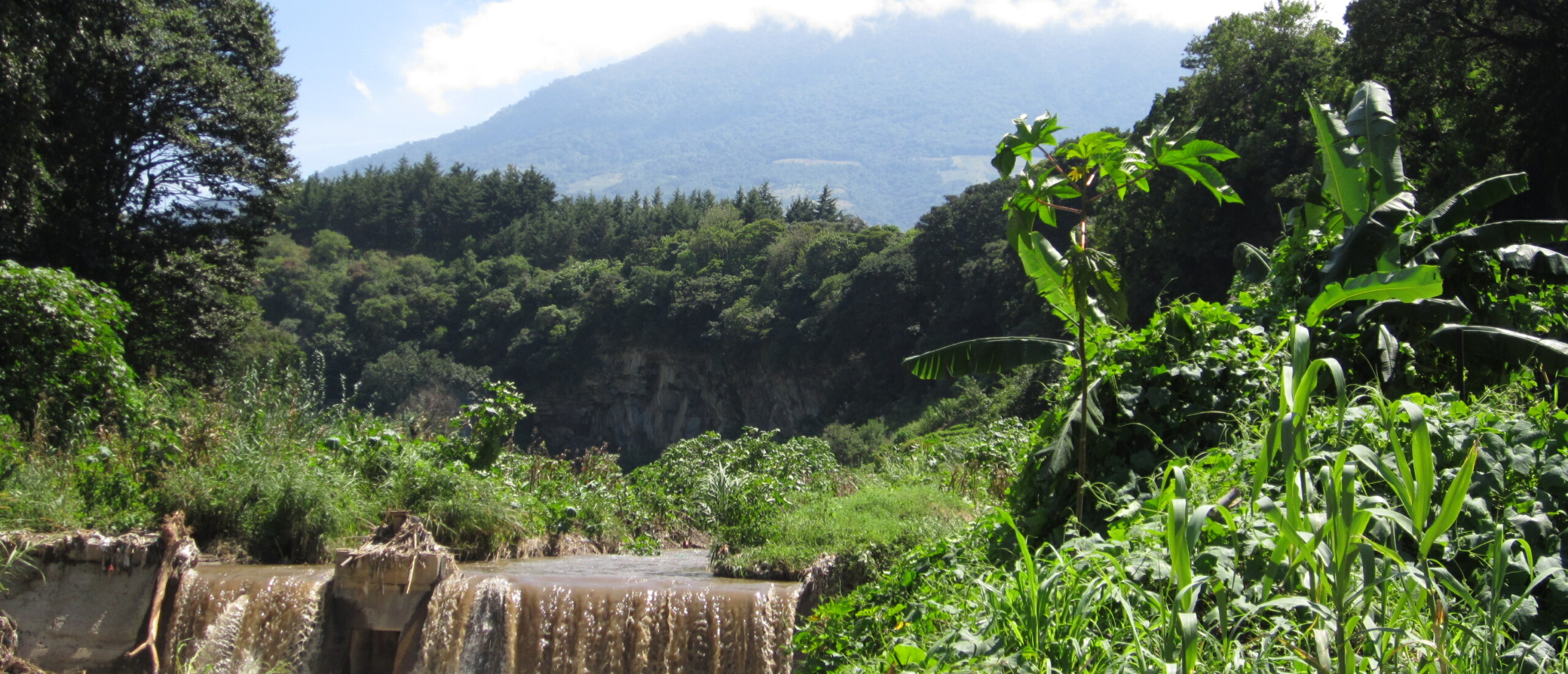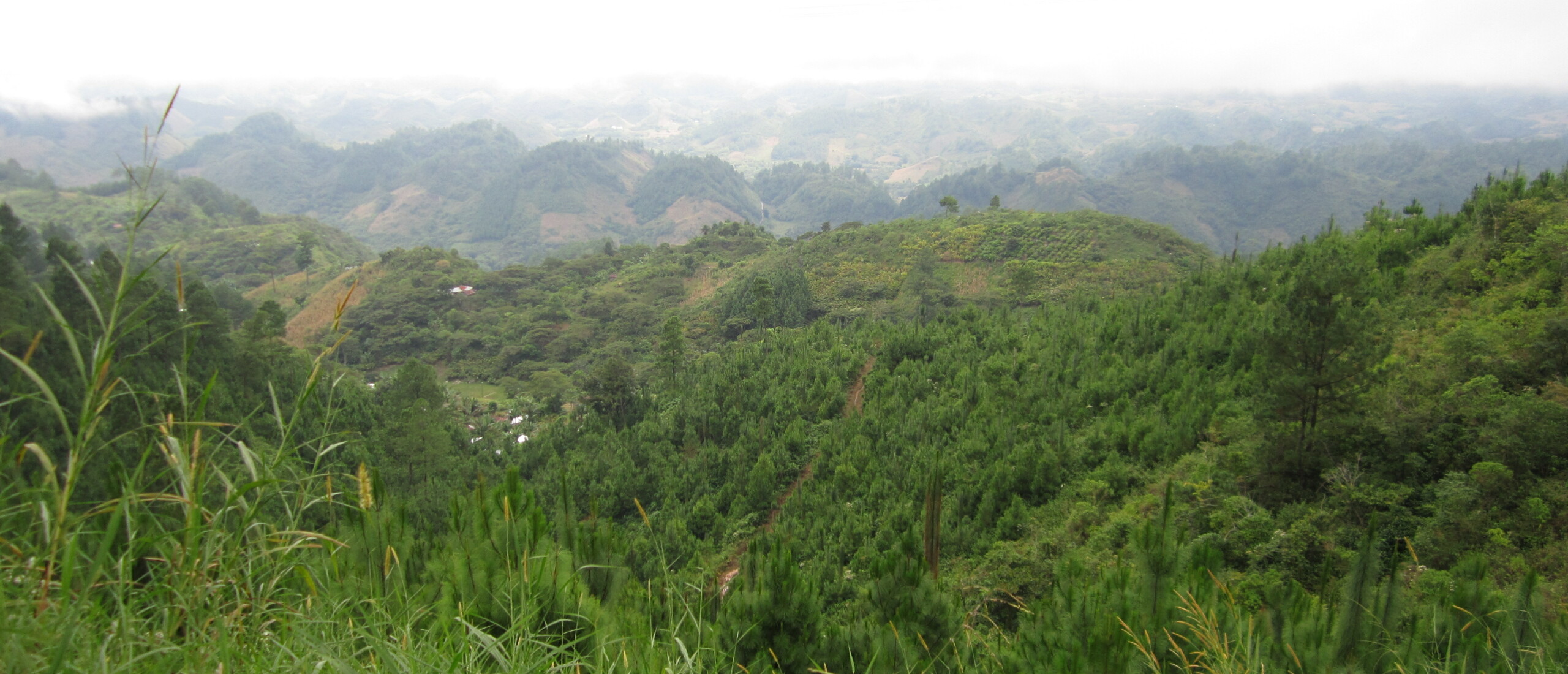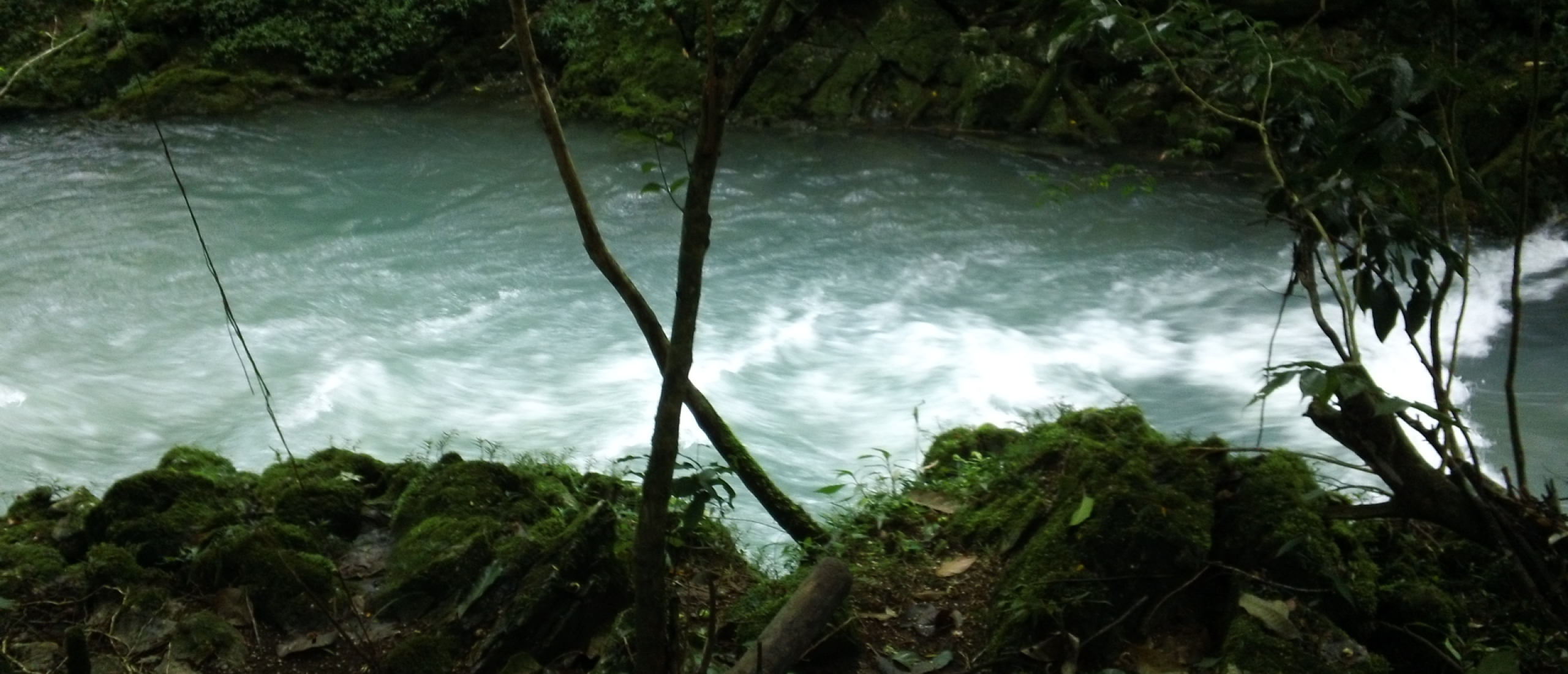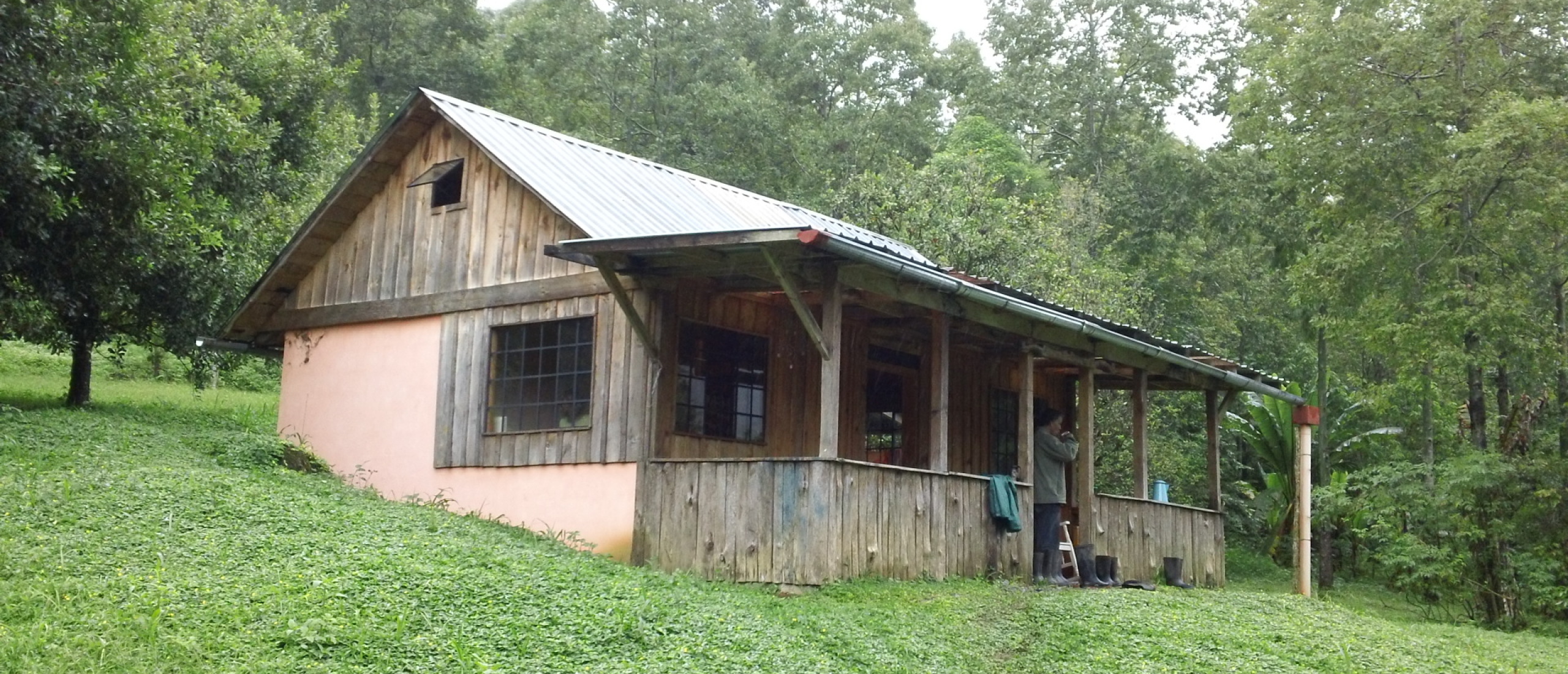
Cobán I am writing this in the rainy highland town of Cobán, staying in the Pensión Monja Blanca, which we thought might formerly have been the Hotel Alemán – the building in which my great grandfather George Charles Champion (GCC) stayed in 1880, but I have just been informed by the owner that, although the hotel was founded in that year, it never bore that name. Until a few moments ago a disco next door was blaring out the most infernal techno music, something which I am sure would have shocked GCC out of his wits, but luckily it has now quietened down and I am able to hear the almost incessant rain pattering on the roof. The last few days have again been a real highlight, almost entirely thanks to my wonderful hosts Rob and Tara, and Peter, John and Ruth, all of whom have made me feel totally welcome in both of their two homes, so much so that I really felt part of their family. My sincerest thanks go to them. And yet another amazing coincidence came to light – it turns out that Rob was a member of the Fresno chapter of the National Audubon Society, and knows my great birding friend Jon Robbins, with whom I have birded in Japan, Thailand and California…I am almost beginning to believe in that theory that no-one is more than six acquaintances away from anyone else! This instalment begins with my arrival at the entrance of the Cahill family’s finca, Chipoc, on the outskirts of Cobán, where they have already recorded around 190 species of bird…and John had just added another, Alder Flycatcher, near the entrance. I was treated to views of this bird and its close relative the Least Flycatcher, allowing for comparison of these similar species at close quarters. Following a tour of this oasis of calm, so close to the town yet almost surrounded by a great meander of the river and therefore isolated from disturbance, Rob, John and I headed off on perhaps one of the most authentic retracing of my great grandfather’s footsteps that I have done so far. Between 10th and 20th March, 1880, GCC made an epic and far from easy journey on his mule down from the highland town of Cobán, over a number of ridges before descending into the tropical lowlands on the way to the Petén. George lodged at the Finca Cubilgüitz, and this was our destination too. My sincere thanks also go to Seth Hempstead, a relative of the current owners and a living result of the union between the two greatest Cobán families, the Dieseldorffs and the Hempsteads, and great grandson of the first German to settle in Cobán. GCC’s description of his travails appears in a letter he wrote to his mother from Cubilgüitz on 19th March, 1880: “I left Cobán on March 9th with a German - a Herr Reuter – (NB: Reuter was NO relative of Seth’s!) for this place, nine leagues on the Petén road, and am staying on his ranch, but he is the dullest and most unsociable fellow I ever met with; here at times, you learn what it is to be hungry, and have nothing to eat! I like Cubilgüitz very much, though one has to rough it in a way you can scarcely imagine; it is all mountain and forest, very hot, as in Cajabon, but one gets used to that. Coming here from Cobán, had a bad accident with my mule in fording the river Sachichá - she cut one of her hind legs very badly on the rocks and I am afraid will be unfit for work for some time; this leaves me in a fix; I want to get back to San Gerónimo in a few days, may hire an animal in Cobán, here there are none to be obtained. My boy Leopoldo is very useful, in fact I don’t know what I should do without him; he cooks for me as well when I have any eggs or plantains to cook. It is cool towards sunrise, but in the middle of the day it is excessively hot. I sleep in my hammock here, luckily there are no mosquitoes.” Our journey, in the Toyota Landcruiser, was somewhat easier, but we too stopped at the Rio Sachichá, which was heavily swollen with all the rain that has been falling recently, and then pressed on northwards, and ever downwards, before we turned in through the gates and found ourselves at the very finca where George had stayed, Cubilgüitz itself, where we had kindly been allowed to lodge. There was not time to look around before darkness fell, but we spent a most interesting evening talking to Seth, who is deeply conscious of his family’s heritage, and had even brought along a copy of the original title deeds to the finca, which mentioned Herr Reuter, described by GCC as “the dullest and most unsociable fellow I ever met with”! The following morning, after a night of continuous torrential rain, we looked around the finca, the main building of which is moderately well maintained, but the outbuildings are falling rapidly into disrepair. Across the courtyard stands a long barn with rooms below; perhaps it was in that very building that George slept, foodless and worried about his mule’s cut leg; in fact, following this accident and the walk back to Cobán, the mule was given a three-month holiday. The building in which we slept was more modern; this may have been built on the site of George’s lodgings. Disrepair or no disrepair, it was a remarkably emotional feeling to be on this finca, especially in the company of Seth, with whose great grandfather my great grandfather dined in the German club in Cobán on New Year’s Eve 1879/1880.
 Cubilguitz, the old and the new
Cubilguitz, the old and the new
Breakfast produced much amusement when we mixed a very pale kind of cerial, Cheerios, with a chocolate flavoured, and therefore very dark, almost black variety, Choco Krispis; the contrast between the two colours brought to mind the extraordinary sight that must have greeted the local inhabitants when my great grandfather, a pale-faced Englishman, and his black servant Leopoldo arrived in the remote villages they visited, causing some degree of shock among the brown-skinned natives. From then on, any contrasting foods, or even when we saw a dark, almost black-looking Little Blue Heron perched in a tree next to a pure white Cattle Egret, the comment “Ah, Champion and Leopoldo” was heard!
 Breakfast cereal CHAMPION AND LEOPOLDO!!
Breakfast cereal CHAMPION AND LEOPOLDO!!
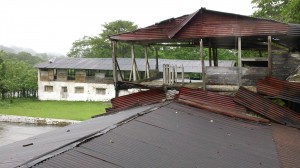 Finca Cubilguitz, looking towards the old building, in which George may have stayed
Finca Cubilguitz, looking towards the old building, in which George may have stayed
We then headed a short distance northwards to the Rio Dolores, the most northerly point of GCC’s travels, and beyond which he was unable to venture. Crossing the bridge also felt strange, almost like entering another world, one beyond GCC’s reach all those years ago. Shortly beyond the bridge, also on Dieseldorff land, we came to an area of illegal land invasions, where local people had occupied the land and built temporary squatter camps against the wishes of the landowners. Here we turned off the main road and bumped our way along to a vanilla farm, where Seth had arranged to meet the owner. Vanilla, a species of orchid, is grown here under black netting, and each individual plant, which is a sort of creeper, climbs up its own supporting post. We also saw the pods laid out neatly on a table to dry; the intensive work required explains the high price that vanilla pods command. The finca overlooks a bend on the fast flowing Rio Dolores, racing along in a brown torrent below us. It was hardly surprising that George was unable to cross.
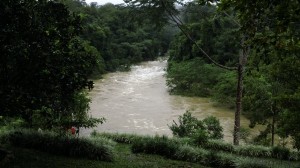 Rio Dolores, which George could not cross
Rio Dolores, which George could not cross
Here we left Seth and his eight-year-old son Nicholas, and headed off to see what birds we could find along a number of extremely muddy backroads. We eventually stopped at Chisec, where we enjoyed a delicious lunch, and from there headed out of town on another rough road, this time aiming for the beautiful lakes at Sepalau, set deep in basins surrounded by forested hills. Here we obtained sightings of among other bird species a juvenile Barred Forest Falcon chasing an adult, three Collared Aracaris and a Keel-billed Toucan in the same tree, and four Least Grebes. Numbers of butterflies here were also impressive, but sadly the rain soon returned, and we started our journey back towards Chisec, and then over the Rio Dolores, and then followed the route that had taken George two full days, leading his injured mule the entire way.
We spent the night at the Cahills’ charming wooden retreat on the Finca Rubel Chaim, where Ruth already was and Tara and Peter arrived later to join us. Here we planned to be up early to check out the birds, but when the alarm sounded at 5 AM, the sound of torrential rain dampened any thoughts of venturing out. Finally, later than we had hoped and after another Champion and Leopoldo breakfast, the rain eased a bit and we began to look around this amazing place, nestled deep in a valley surrounded by primary cloudforest. The work that they are doing here involves providing education and assistance to the local communities in the isolated villages dotted along the ridges, in some cases still with no access roads, and encouraging them to preserve the tracts of native cloudforest and even to reforest areas with native species close to their settlements. They are battling against illegal logging, ignorance and even superstition, but signs are encouraging so far.
 The cottage used by the Cahills near the cloudforest
The cottage used by the Cahills near the cloudforest
Water levels were far higher than the Cahills had almost ever seen, but we gingerly edged our way over two slippery wooden bridges, and finally reached an amazing cave entrance, complete with stalactites and stalacmites forming an almost devilishly open-mouthed appearance; local Mayan people still use this cave for sacrifices and other practices. I had not taken my only remaining camera for fear of it too becoming soaked, so was unable to photograph this impressive, yet somehow also almost oppressive scene. After an early lunch, Rob, John, Peter and I set off on the next part of our ornithological quest, this time to a hill close to a house where they used to live, near Bezaleel. Our target species here was the Slender Sheartail, a minute and rare hummingbird that is restricted to extreme southern Mexico, the highlands of Guatemala and part of Honduras, and nowhere common. We did not have to wait long before a male appeared on a low bush, flexing his two elongated tail feathers in a scissor-like performance. Peter then moved further along the track, and soon found himself close to a female who appeared to be going in and out of what may have been a nest. We were enthralled for a while by these enchanting little birds…but were horrified to hear of a recent visit by a scientist who had recently visited and collected numbers of both males and females, and even a complete nest, of these near-threatened birds. George’s employers Godman and Salvin might have been justified in doing such a thing in the nineteenth century, but surely we should be past such excessive collecting today. We then headed off to the highland town of San Cristóbal, visited by my great grandfather in 1880: “On February 1st, I went to San Cristóbal, about 5 miles distant but on the other side of the mountains, a very pretty place on the shores of a lake surrounded by mountains, and delightful climate like Cobán if it did not rain so much. Being Sunday, the plaza was crowded with Indians, who bring in all sorts of things to sell. Sundays and Thursdays being the market days, the women bareheaded with their enormous red pigtails and their white mantilla (?) or whatever they call them, all smeared over with yellow from cacao of which they consume a great deal, afterwards wiping their fingers on their scanty dress; they wear a blue check very short skirt and a white thin mantle, that is about all, the men with white drawers and straw hats. Many coffee plantations here, all round the lake.”
 The church of San Cristobal, in front of which GCC observed many scantily clad females!
The church of San Cristobal, in front of which GCC observed many scantily clad females!
Although it was Sunday, we were slightly disappointed not to find any scantily dressed native women in the plaza, but we did spend an excellent afternoon birding by the lake, even adding some new birds to the local list: Black-necked Stilt, Limpkin and a female Ruddy Duck with at least three young being perhaps the highlights. I noticed that one of the baby Ruddy Ducks appeared to have become trapped against the bank of a channel, and Peter performed a daring rescue mission by hailing two boys in a canoe and paddling with them across to the duckling, whose feet had indeed become entangled in a huge fishing net.
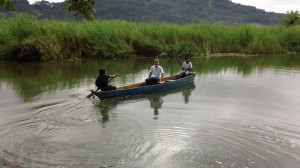 Peter heading off to rescue the Ruddy Duck
Peter heading off to rescue the Ruddy Duck
So ended my excellent few days with the Cahill family, to whom again my most sincere thanks. Not only had they made me feel so welcome, assisted me greatly in my quest to find the locations frequented by George Charles Champion and Leopoldo, the colour-contrasting duo, but they also pushed my Guatemalan birdlist up to 204 species. Special congratulations go to John, whose knowledge of the local birds, and ability to recognise or even hear the quietest and/or most distant bird calls are truly incredible. Peter, without binoculars, is also a talented observer…and proved to be a great catcher of butterflies and other insects for me to observe…and photograph, although without the Coolpix this is not easy!


